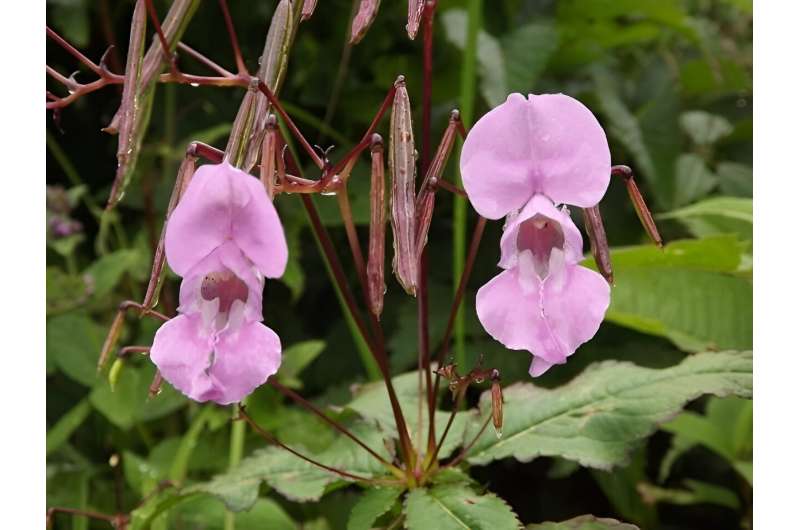This article has been reviewed according to Science X's editorial process and policies. Editors have highlighted the following attributes while ensuring the content's credibility:
fact-checked
peer-reviewed publication
trusted source
proofread
Team creates first database of field studies on the impacts of invasive plants in Europe

A team of experts has created the first database of field studies on the impacts of invasive plants on native species, communities and ecosystems in Europe.
The dataset comprises 266 peer-reviewed publications reporting 4,259 field studies on 104 invasive species across 29 European countries. It is the first harmonized database of its kind at continental scale, and is freely accessible to the scientific community for future studies. Notably, one third of the studies focused on just five species that invade several central European countries.
Published in NeoBiota, the project was executed by researchers from the Spanish institutes, Estación Biológica de Doñana, Universidad de Sevilla, Instituto Pirenaico de Ecología and Universidad de Alcalá, as well as the University of Fribourg, Switzerland.
The comprehensive database indicates that invasive plants impact other plants, animals and microbes, all trophic levels (herbivores, parasites, plants, pollinators, predators, omnivores, decomposers and symbionts) and numerous ecosystem processes.
More than half of the studies were conducted in temperate and boreal forests and woodlands and temperate grasslands. Major gaps in knowledge are found in Baltic and Balkan countries, in desert and semi-arid shrublands, subtropical forests and high mountains.
Prof. Montserrat Vilà, coordinator of this task, highlights that the database provides information on whether the invasive species increase, decrease or have a neutral effect on the ecological variable of study. This allows investigation into the circumstances in which the invader has contrasting effects.
The database will be updated as new field studies on the ecological impacts of invasive species are published. "We hope for more studies on species that are still locally rare and with restricted distribution," Prof. Montserrat Vilà says, "this database is of interest for academic, management and policy-related purposes."
More information: Montserrat Vilà et al, Field studies of the ecological impacts of invasive plants in Europe, NeoBiota (2024). DOI: 10.3897/neobiota.90.112368
Journal information: NeoBiota
Provided by Pensoft Publishers


















